Data Centers
Read all about the latest and the greatest happenings in the world of Data Centers.
The digital technology landscape is fast evolving, and businesses harness it to the maximum. While the pandemic affirmed technology’s role in a much bigger way, organisations are now tweaking their business approaches around digital.
The past two years have witnessed widespread adoption of cloud and SaaS-based solutions along with the migration from captive data centers to third-party facilities. While these have been two major trends, there has also been significant focus around cybersecurity and automation to ensure business resiliency.
As businesses step into 2022 with a renewed focus on digital transformation, achieving business excellence and delivering exceptional customer experiences will remain the mainstay of strategic success. Underlining how digital innovation involving use cases around emerging technologies will be crucial in driving this, we present to you top technology trends predictions by India’s leading CIOs and members of the Yotta CIO Innovation Council (YCIC).
Blockchain will achieve major breakthroughs
Blockchain use cases are being realised across domains – from something as simple as exchanging data without compromising privacy and security to curbing issues such as counterfeiting, transforming supply chain processes, healthcare and so on. According to Kenneth Research, 56% of Indian organisations turn to blockchain as part of their core business. In addition, growing digital adoption itself is associated as a key driver of blockchain adoption.
Commenting on the applications of blockchain, Pankaj Mittal, COO, Aurigraph shares, “Blockchain has come a long way, and we are witnessing its adoption in multiple ways – from supply chain to track-and-trace, among others. We have seen some interesting use cases in governance; for instance, blockchain enables direct transfer of government benefits to the recipient, thereby eliminating cumbersome physical processes. DLT has further brought down the cost of each transaction.”
In one of the early adoptions of blockchain for governance, the Rajasthan government has been using the technology to digitise electronic health records and land records, whereas the Maharashtra government is leveraging the technology to issue Covid-19 test certificates. With the latest development coming from Union Budget 2022, the government’s plan to launch Digital Rupee using blockchain further reiterates its underlying potential.
According to Ninad Raje, Director and CIO, HealthAssure, blockchain trends will determine the future of the world economy, and 2022 will be a breakthrough year. He says, “As business sectors, governments, and leading organisations wake up to the fact and realise the importance of blockchain technology, riding blockchain-based solutions will be hugely beneficial.”
With many blockchain startups coming to the fore, collaborating with industry stakeholders and developing solutions around real-world use cases, significant strides are expected to be made in this space in the coming times.
“The year 2022 is when many investors, founders, bankers, and developers will look for new opportunities to go beyond the traditional means. We will see the adoption of the blockchain ecosystem by many major finance and banking organisations. Major banks have already accepted blockchain. Other popular payment gateways have also invested heavily in blockchain. An ever-increasing number of banks and financial conglomerates will be seen adopting blockchain in 2022 & beyond,” adds Raje.
While banking and financial institutions are making significant progress in blockchain adoption, the application of this technology holds the potential to address an array of challenges across sectors.
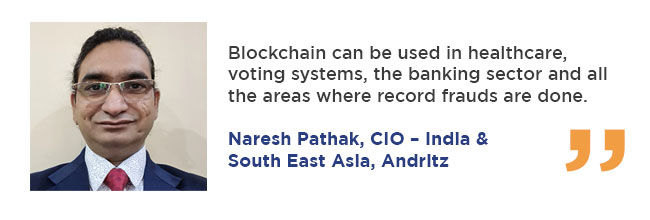
Sharing his thoughts, Naresh Pathak, CIO – India & South East Asia, Andritz explains, “Blockchain can help the agriculture industry to keep all the land records on the chain or use it to create an uber of tractors. It can help in healthcare, voting systems, the banking sector and all the areas where record frauds are done. Banks are the first to adopt this technology because if they don’t, it has the potential to disrupt them.”
The latest wave in the blockchain is of non-fungible tokens (NFT) and the metaverse. It’s making much buzz in the headlines lately, and organisations have started exploring how they can emulate an utterly physical world experience on the internet, creating a parallel world of experiences altogether. As we progress into 2022, we will determine how the metaverse will shape.
Convergence of Edge Computing and 5G will augment business capabilities
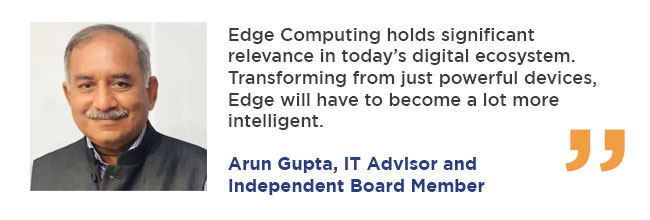
Enterprises are increasingly foraying into a hyperconnected ecosystem, even more so in certain sectors with strong operational technology footprint such as energy, manufacturing, infrastructure, construction, mining, healthcare and engineering. Industry 4.0 is not a novelty; many organisations are yielding benefits from the convergence of IT and OT. However, with the integration of AI technologies and 5G, the existing smart, connected ecosystem will become smarter and hyperconnected. As Arun Gupta, IT Advisor and Independent Board Member, explains, “Edge Computing holds significant relevance in today’s digital ecosystem. Transforming from just powerful devices, Edge will have to become a lot more intelligent.”
Machines will talk to each other and leverage insights generated by each other to run processes in an automated manner. A lot more data will be generated at the Edge and will need to be processed at the source to meet the low latency requirements for seamlessly integrated operations. Edge Computing will, therefore, act as a catalyst and will be among the top focus areas for enterprises.
Sharing his observations, Milind Khamkar, Group CIO, Super-Max says, “5G will emerge as a strong networking solution in 2022. Huge expectations are associated with the arrival of 5G, which will lead to the rise of Edge Computing in a much stronger way. Moreover, as businesses are expanding their presence across India, including remote regions, last-mile connectivity will be important, thus making Edge Computing a critical technology for them.”
We have seen in recent years how smart devices and appliances have become commonplace in every household. Institutional use cases of IoT are witnessing similar traction across industries. Furthermore, focusing on transforming experiences, businesses are increasingly exploring how best they can leverage the connected ecosystem. According to Frost & Sullivan, Edge computing will be adopted by 90% of enterprises by 2022.
Ninad Raje, Director and CIO, HealthAssure adds, “IoT is easily the fastest growing umbrella of edge computing devices. The prevalence of smart devices is projected to quadruple by 2025. Expect this growth to expand the capabilities of edge computing dramatically. In addition, the growth of IoT could bring about greater benefits in the edge computing sector, such as lower latency. The healthcare industry has been at the forefront of IoT adoption, so it’s only right that they’re leading in the edge computing technology space as well. Large hospitals realise it’s more beneficial for operations to keep data, such as medical sensors, electronic health records, and digital imaging systems, close by rather than pushing them to the cloud.”
Infrastructure-as-a-Service (IaaS) will become the de-facto approach
The pandemic has been a major factor that has forced organisations to relook their IT infrastructure footprint. While maintaining business continuity has driven organisations to host their infrastructure at third party colocation facilities, the ever-increasing focus on business applications and innovation requires realignment of the IT Team’s efforts. As a result, organisations will look at the various ways to shed the infrastructure burden and turn to Infrastructure-as-a-Service offerings.
Arun Gupta, IT Advisor and Independent Board Member opines, “The model of Infrastructure-as-a-Service has already become mainstream among enterprises. Going forward, across the next three years, there will be an increased migration from fixed capacities to the IaaS model, which effectively leads us to serverless computing. While it’s gaining more momentum in the developed markets, the Indian market will take some time to realise the benefits. However, IaaS will eventually have to factor in serverless computing at its center.”
There’s a growing realisation among enterprises that today’s digital business environment requires more than just keeping the lights on. Additionally, the infrastructure requirement of businesses themselves is evolving. This, combined with robust IaaS offerings by service providers, will continue to drive greater adoption of IaaS.
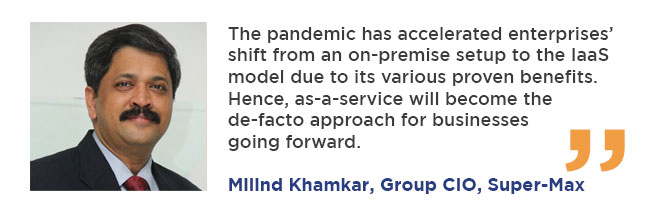
Reiterating IaaS as the standard best IT practice as we advance, Milind Khamkar, Group CIO, Super-Max, comments, “The on-premises model has reached a saturation point. Furthermore, the pandemic has accelerated enterprises’ shift from on-premise setups to Infrastructure-as-a-Service (IaaS) model due to its various proven benefits. As a result, as-a-service will become the de-facto approach for businesses going forward.”
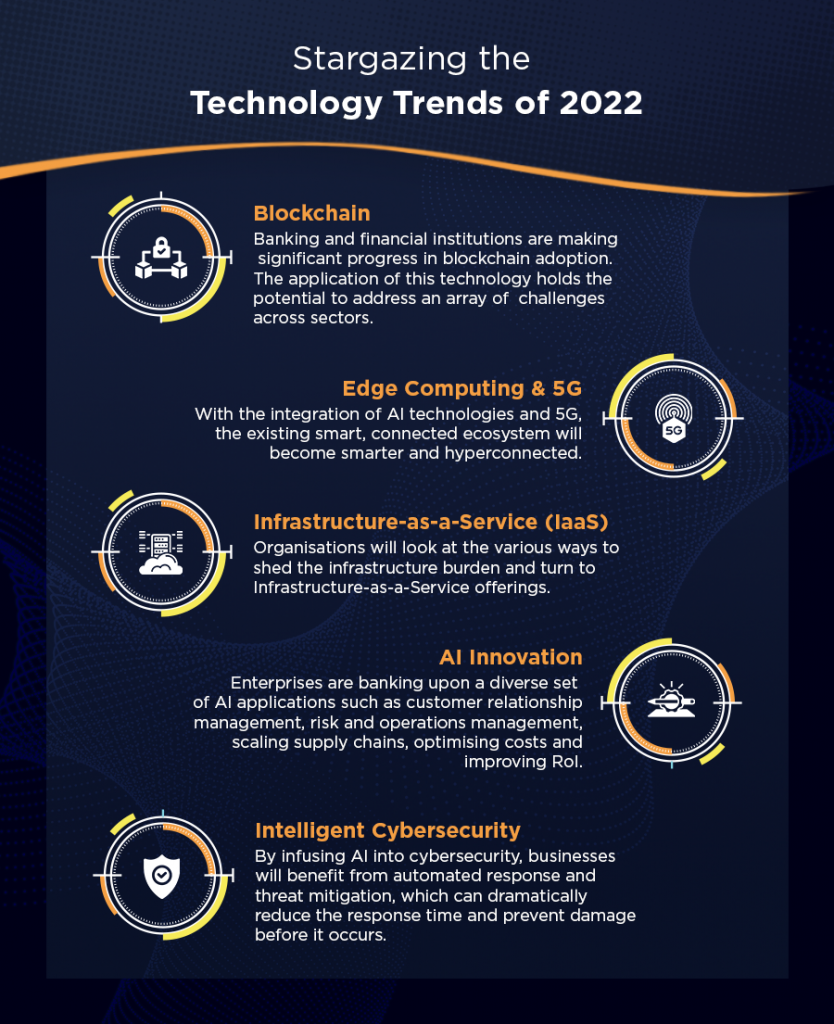
AI Innovation will be a continuous journey
Artificial Intelligence might have been a buzzword to many until recently, but the technology is poised to gain more prominence going ahead. While many use cases are available already, enterprises lack the high-performance infrastructure capacity required to run AI workloads. However, organisations opting for third-party infrastructure on an as-a-service model are enabled with high performance and scalability to test and deploy their AI applications.
From predictive analytics and monitoring machine performance to enriching insights from customer engagements, from the personalisation of offerings to customer support, AI has paved its way across business functions with exciting use cases. Enterprises are banking upon a diverse set of AI applications such as customer relationship management, risk and operations management, scaling supply chains, optimising costs and improving RoI.
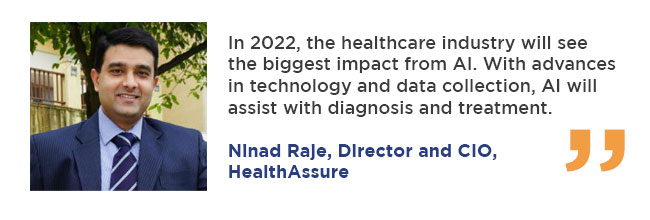
Sharing his thoughts on the emergence of AI, Arun Gupta, IT Advisor, Digital Strategist and Independent Board Member says, “Artificial Intelligence is pervasive in today’s world, and it is infused in our daily lives in some form. Enterprises have successfully deployed AI for small use cases across functions such as demand planning, supply chain, customer journey, etc. However, no organisation can claim to be completely AI-enabled. The technology will continue to make inroads into various processes, making AI adoption a continuous journey.”
Various research reports reiterate positive market sentiments, indicating the growth that is expected in AI adoption in the near future. For example, according to an IDC report, the AI market in India size is expected to clock $7.8 billion (Rs. 582 billion) by 2025, growing at a CAGR of 20.2%.
Providing a perspective of the manufacturing sector, Milind Khamkar, Group CIO, Super-Max shares, “Automation will be among the key focus areas for enterprises in 2022 as they transform their business processes. Moreover, huge volumes of data will be available at businesses’ disposal. Artificial Intelligence and Machine Learning will play a major role in deriving rich insights from data, thereby enabling businesses to make data-driven decisions.”
The healthcare sector is another industry where AI is bringing transformational impact. AI, along with IoT and automation, is redefining patient care. While neural AI use cases may not be a mainstream reality yet, AI is enabling healthcare providers to make timely, data-driven decisions and improve the overall patient experience.
Shedding more light, Ninad Raje, Director and CIO, HealthAssure informs, “I predict that in 2022, the healthcare industry will see the biggest impact from AI. With advances in technology and data collection, AI will assist with diagnosis and treatment and can dramatically accelerate the development of medicines and vaccines. The potential to extend human life is a genuine possibility while also improving the quality of life, thanks to advances made during the pandemic. Additionally, this will have the most direct impact on the average consumer and will bring AI/ML to the forefront on consumer confidence.”
Intelligent cybersecurity will safeguard businesses
The expanding digital landscape and the increasing maturity of emerging technologies are undoubtedly positive for organisations’ digital efforts. As the above trends indicate, it is helping businesses progress on their digital roadmap. However, technology is democratic in nature. The bad actors of the cyber world are exploiting the same emerging technologies to build and launch sophisticated attacks. In such a scenario, traditional defence frameworks often prove inefficient. AI is helping cybersecurity frameworks learn from complex threat patterns and flag any anomaly in real-time. It is also enabling organisations to identify unknown threats and safeguard sensitive data.
According to a recent report by the Data Security Council of India (DSCI), the cybersecurity industry embraces a platform-based approach to offer holistic solutions and simplify security integration and deployment. About 74 per cent of companies leverage artificial intelligence and machine learning to enhance their offerings.
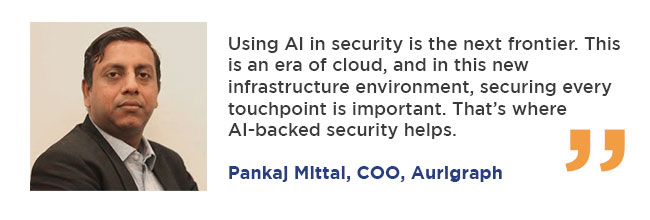
Pankaj Mittal, COO, Aurigraph, says, “Using AI in security is the next frontier. Perimeter security is now obsolete, as employees are everywhere. This is an era of cloud, and in this new infrastructure environment, securing every touchpoint is important. That’s where AI-backed security helps. By getting feeds from different sources, analysing them and gathering intelligence, AI helps in proactive security of your IT environment.”
By infusing AI into cybersecurity, businesses also benefit from automated response and threat mitigation, which can dramatically reduce the response time and prevent damage before it occurs. Cybersecurity is bound to witness a shift with AI, which will bolster overall cyber resilience.
Ninad Raje, Director and CIO, HealthAssure adds, “Human-AI collaboration will be a major trend in 2022. As cyberthreats advance, detecting new types of attacks and handling more complex incidents will require human capabilities, critical and creative thinking, and teamwork, topped with AI. In 2022 and beyond, we expect to see more emphasis being placed on greater human-AI collaboration, where human analysts connect and correlate data from the AI output, streamline processes and generate actionable insights to strengthen their cybersecurity posture.”
The way ahead
As the digital landscape advances, enterprises will continue to ramp up their IT investments to achieve greater outcomes. While adopting these technologies may vary across industries, they will play a pivotal role in streamlining processes and delivering enhanced experiences. In addition, the year 2022 is expected to see several breakthrough developments, including the commercial rollout of 5G networks and the enactment of India’s Data Protection law. An amalgamation of these factors and the increasing digital maturity will take digital transformation to new heights.
Read all about the latest and the greatest happenings in the world of Data Centers.